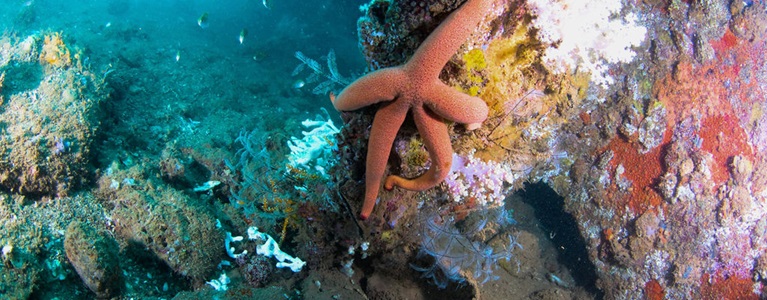
Environment data table
Environment data included in the 2023 column of this data table is relevant to the period 1 January 2023 to 31 December 2023 and was published on 27 February 2024.
Data included in the 2023 column of this data table is relevant to the period 1 January 2023 to 31 December 2023 and was published on 27 February 2024. Please note this table is updated annually in conjunction with the release of the corresponding annual report.
| Environment1,2 | 2023 | 2022 | 2021 | 2020 | 2019 |
|---|---|---|---|---|---|
| Non-greenhouse gas emissions3 | |||||
| Nitrogen oxides (NOx) (tonnes) | 14,431 | 14,173 | 12,973 | 13,023 | 11,713 |
| Sulphur oxides (SOx) (tonnes) | 56 | 56 | 50 | 52 | 49 |
| Volatile Organic Compounds (VOCs) (tonnes) | 14,836 | 16,073 | 16,445 | 17,665 | 13,223 |
| Refrigerants4 | |||||
| CFC-11 (tonnes) | 0.57 | 0.02 | 0.00 | 0.00 | 0.01 |
| Water | |||||
| Fresh water use (m3)5 | 338,842 | 330,902 | 399,443 | 368,017 | 311,129 |
| Fresh water intensity (m3/kt)6 | 11 | 11 | 15 | 12 | 11 |
| Produced formation water – reinjection (m3)7 | 11,992,857 | 13,907,658 | 7,941,229 | 4,812,942 | 1,888,731 |
| Produced formation water – open marine (m3)8 | 4,347,138 | 3,875,322 | 3,076,324 | 3,155,704 | 2,547,335 |
| Produced formation water – oil load open marine (kg)8,9 | 48,992 | 38,079 | 28,673 | 30,836 | 17,687 |
| Waste10 | |||||
| Non-hazardous (tonnes) | 3,343 | 3,676 | 2,600 | 2,940 | 2,548 |
| Hazardous (tonnes) | 10,215 | 11,738 | 12,967 | 9,913 | 7,634 |
| Total waste (tonnes) | 13,558 | 15,414 | 15,566 | 12,853 | 10,182 |
| Waste disposal | |||||
| Incineration (tonnes) | 26 | 0 | 0 | 0 | n/a |
| Evaporation (tonnes) | 6,193 | 8,785 | 7,082 | 6,198 | 5,030 |
| Landfill (tonnes) | 2,956 | 3,275 | 2,218 | 3,314 | 2,256 |
| Reused / recycled (tonnes) | 4,218 | 2,861 | 5,064 | 3,173 | 2,767 |
| Other (tonnes) | 161 | 311 | 1,202 | 168 | 130 |
| Environmental incidents11 | |||||
| Total number of hydrocarbon spills >1 bbl | 0 | 1 | 0 | 0 | 2 |
| Total – Quantity of hydrocarbon spilt for spills >1 bbl (m3) | 0 | 0.75 | 0 | 0 | 65.05 |
| Total number of hazardous non-hydrocarbon spills >1 bbl | 0 | 2 | 0 | 2 | 6 |
| Total – Quantity of hazardous non-hydrocarbon spilt for spills > 1 bbl (m3) | 0 | 2.91 | 0 | 27.62 | 12.58 |
- Data included here includes information relevant to the former Woodside Petroleum Ltd as well as the Woodside Energy Group Ltd for the period 1 January 2023 to 31 December 2023. Data relevant to the assets acquired through the merger with BHP’s petroleum business is reflected from 1 June 2022.
- Performance data is reported on a total basis as appropriate.
- For Australian facilities estimated NOx, SOx and VOCs emissions are guided by NPI techniques using a combination of direct measurement, engineering calculation and emission factors. Emissions are aggregated for all Australian facilities and are irrespective of NPI reporting thresholds. For International assets, the 2023 data uses calculation techniques and emissions factors guided by Australian NPI and AP-42 where applicable for NOx, SOx and VOCs emissions. For 2022 data relevant to International assets, NOx and SOx emissions were estimated using a combination of engineering calculation and emission factors. International assets VOCs were excluded in 2022.
- For Australian facilities Woodside no longer acquires Ozone Depleting Substances (ODS), in line with applicable legislation and protocols. A total of 0.57 tonnes of R-22 (0.031 CFC-11-e) was acquired at two international facilities (0.05 tonnes of R-22/0.0027 tonnes CFC-11-e at Shenzi and 0.52 tonnes of R-22/0.028 tonnes CFC-11-e at Angostura). Woodside has phased out most ODS and has active projects to replace equipment still using ODS, except for Angostura.
- Includes Corporate (Perth and Houston offices), KGP, Pluto LNG, KBSF, Macedon, Angostura, Shenzi, Houma warehouse municipal water use.
- The water intensity denominator is based on production figures on an operational control basis.
- Facilities under operational control that reinject produced formation water include Ngujima-Yin and Pyrenees.
- Facilities under operational control that discharge produced formation water are Goodwyn-A, NRC, Okha, Angel, Angostura and Shenzi.
- Data has been corrected for 2022, an increase in 5,668kg has been reflected.
- Includes Corporate (Perth office), Australian facilities under operational control, Angostura and Shenzi waste generation. Houston office and Houma (United States) warehouse have not been included.
- Reportable hydrocarbon or hazardous non-hydrocarbon spills greater than 1 bbl which have been released to the environment. The incidents did not result in significant negative impacts to the surrounding environment, were highly localised and temporary in nature. Definition is aligned to GRI 306-3 (2016).
NPR refers to not previously reported.
n/a Not applicable.
